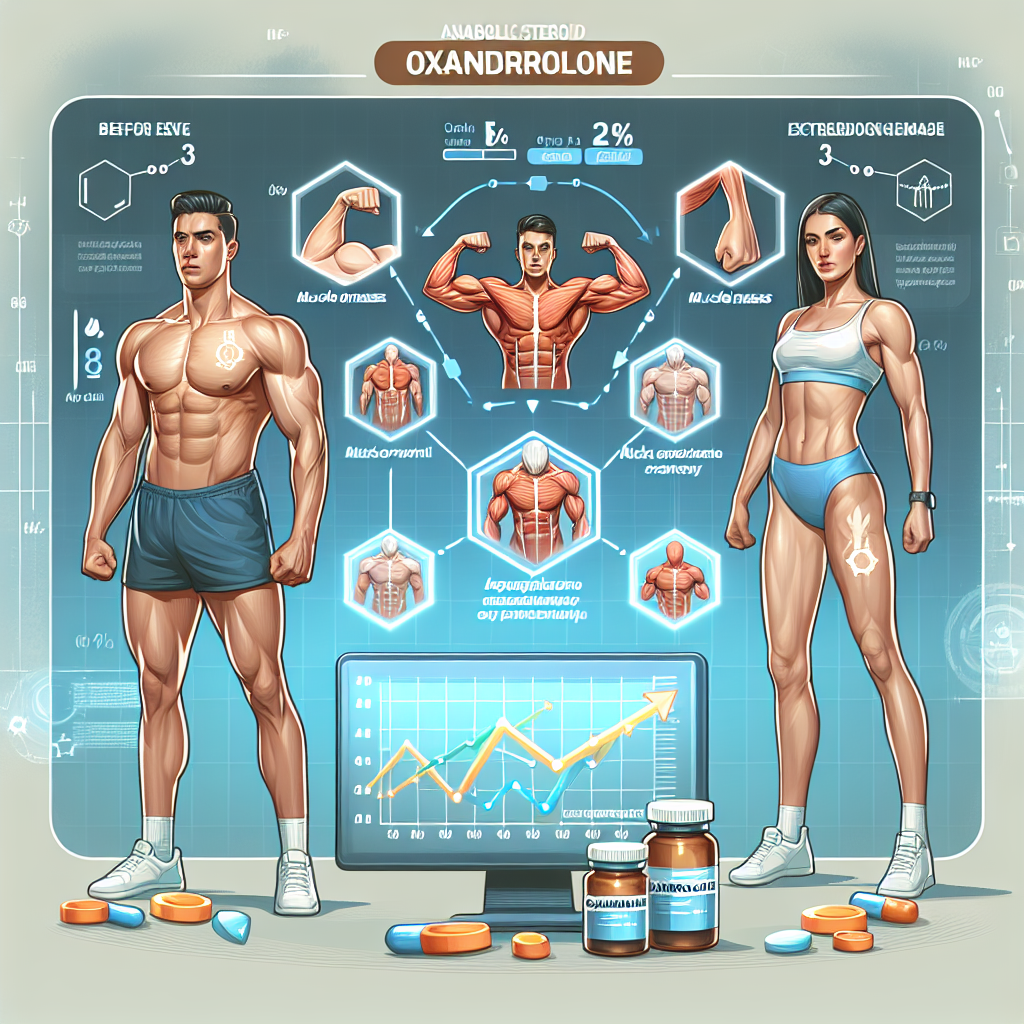-
Table of Contents
Oxandrolone’s Impact on Athletes’ Muscle Recovery
Athletes are constantly pushing their bodies to the limit in order to achieve peak performance. This intense physical activity can often lead to muscle fatigue and injury, hindering an athlete’s ability to train and compete at their best. In recent years, there has been a growing interest in the use of performance-enhancing drugs to aid in muscle recovery and improve athletic performance. One such drug that has gained attention is Oxandrolone, a synthetic anabolic steroid. In this article, we will explore the impact of Oxandrolone on athletes’ muscle recovery and its potential benefits and risks.
The Science Behind Oxandrolone
Oxandrolone, also known by its brand name Anavar, is a synthetic derivative of testosterone. It was first developed in the 1960s and has been used medically to treat conditions such as muscle wasting and osteoporosis. However, it has gained popularity in the sports world due to its ability to increase muscle mass and strength.
Like other anabolic steroids, Oxandrolone works by binding to androgen receptors in the body, stimulating protein synthesis and promoting muscle growth. It also has a low androgenic effect, meaning it has a lower risk of causing unwanted side effects such as hair loss and acne compared to other steroids.
Oxandrolone and Muscle Recovery
One of the main reasons athletes turn to Oxandrolone is its potential to aid in muscle recovery. Studies have shown that Oxandrolone can increase the production of red blood cells, which are responsible for delivering oxygen and nutrients to muscles. This can help speed up the recovery process and reduce muscle fatigue after intense training or competition (Kicman, 2008).
In addition, Oxandrolone has been found to have anti-catabolic effects, meaning it can prevent the breakdown of muscle tissue. This is especially beneficial for athletes who engage in high-intensity training, as it can help preserve muscle mass and prevent muscle loss (Kicman, 2008).
Potential Benefits for Athletes
Aside from its impact on muscle recovery, Oxandrolone has been touted for its potential benefits for athletes. These include:
- Increase in muscle mass and strength
- Improved endurance and performance
- Enhanced recovery from injuries
- Reduced body fat
- Improved bone density
These benefits can be especially appealing to athletes who are looking to gain a competitive edge and improve their overall performance.
Risks and Side Effects
While Oxandrolone may offer potential benefits for athletes, it is important to note that it also comes with risks and potential side effects. These include:
- Increased risk of liver damage
- Hormonal imbalances
- Acne
- Hair loss
- Mood swings and aggression
Furthermore, the use of Oxandrolone is banned by most sports organizations, including the World Anti-Doping Agency (WADA). Athletes who are caught using this drug can face serious consequences, including suspension and loss of medals or titles.
Real-World Examples
Despite the potential risks and side effects, some athletes have still turned to Oxandrolone for its performance-enhancing effects. One notable example is the case of sprinter Ben Johnson, who was stripped of his gold medal at the 1988 Olympics after testing positive for Oxandrolone (Kicman, 2008). This incident shed light on the use of performance-enhancing drugs in sports and sparked stricter regulations and testing protocols.
Another example is the case of MMA fighter Anderson Silva, who tested positive for Oxandrolone in 2015 and was subsequently suspended and fined (USADA, 2015). This highlights the ongoing issue of doping in combat sports and the potential consequences for athletes who choose to use banned substances.
Expert Opinion
While Oxandrolone may offer potential benefits for athletes, it is important to consider the potential risks and side effects. As with any performance-enhancing drug, the use of Oxandrolone should be carefully monitored and managed by a medical professional. It is also crucial for athletes to understand the potential consequences of using banned substances in sports.
According to Dr. John Hoberman, a leading expert in the field of sports pharmacology, “The use of Oxandrolone and other anabolic steroids in sports is a complex issue that requires careful consideration of both the potential benefits and risks. Athletes should be aware of the potential consequences of using these substances and make informed decisions about their use in consultation with medical professionals.”
References
Kicman, A. T. (2008). Pharmacology of anabolic steroids. British Journal of Pharmacology, 154(3), 502-521.
USADA. (2015). UFC athlete Anderson Silva accepts sanction for anti-doping policy violation. Retrieved from https://www.usada.org/silva-accepts-sanction-for-anti-doping-policy-violation/
Conclusion
In conclusion, Oxandrolone has been shown to have a potential impact on athletes’ muscle recovery, making it a popular choice among athletes looking to improve their performance. However, it is important for athletes to understand the potential risks and side effects associated with its use, as well as the consequences of using banned substances in sports. As with any performance-enhancing drug, the use of Oxandrolone should be carefully monitored and managed by a medical professional.
Ultimately, the decision to use Oxandrolone or any other performance-enhancing drug should be made after careful consideration and consultation with experts in the field. As the world of sports continues to evolve, it is crucial for athletes to prioritize their health and well-being while striving for excellence in their chosen sport.

Leave a Reply